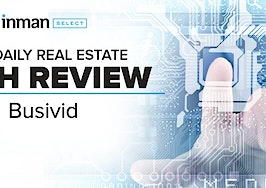Takeaways:
- The regular rental yield in Europe varies from 3 to 7 percent per year.
- The client thinks a well-known brand guarantees their returns, but in fact, they are dealing with a small legal entity operating under the brand’s franchise; if it goes bankrupt, the agreement is invalid.
- The term “guaranteed yield” is used a bit too freely; there’s a reason we’re all supposed to read the fine print, and this one tells you it’s a floating rate of return.
I often hear buyers saying they’re looking to invest in income-generating property in Europe and the U.S. They want to have it both ways: low risk and high yield. Come to think of it, who wouldn’t?
Nevertheless, when it comes to investing in buy-to-let real estate, deals like that don’t come along every day. (Development projects are a different matter, but that’s another story.)
The regular rental yield in Europe varies from 3 to 7 percent per year and the Internal Rate of Return (IRR), which is calculated on all cash flows during the project’s lifespan, ranges from 6 to 9 percent.
And from what I’ve seen, there are no high-quality projects with reliable rental contracts and returns above 7 percent on the European market.
Unless you’re selling that — in which case, drop me a line, I’ll have buyers queueing at the door by tomorrow.
Only recently a client approached me looking for real estate with guaranteed rental yields starting at 8 percent. And he was surprised when I told him that there was no such thing.
“How about these?” he answered. He proceeded to show me some projects from other companies promising those yields.
True, some offers do “guarantee” 8 percent or more, but it’s not that simple.
Here are the five common pitfalls:
1. Low market value
If a sales office promises 8 to 10 percent yields for the next five years to their client, here’s how they’re doing it: They sell the property, and it’s usually new, at 50 to 100 percent above market value.
The management company operating there pays the client the promised 8 to 10 percent over five years but then discontinues its services.
Suddenly the property’s market value turns out to be 50 to 100 percent lower than what the buyer thought it was.
2. Big names
The client thinks a well-known brand guarantees their returns, but in fact, they are dealing with a small legal entity operating under the brand’s franchise.
If this small company goes bankrupt, the agreement is no longer valid, and the buyer is left with a property that no one wants to buy.
3. Fine print
The term “guaranteed yield” is used a bit too freely, and by this I mean incorrectly. There’s a reason we’re all supposed to read the fine print, and this one tells you it’s a floating rate of return depending on the management company’s operating profit.
4. Hidden charges
Salesmen sometimes don’t include hidden charges in their yield calculation, such as insurance or operating costs, and then they appear in the agreement with the management company.
5. Reserved rights
Some management companies guarantee yields for a particular term say, 8.5 percent for four years, but they reserve the right to buy out the property with a 10 percent bonus at the end of the contract.
So if the property is in demand after those four years, the management company has the right to buy you out, and you won’t get to benefit from capital growth.
Meanwhile, if the property is unpopular, yields will be considerably less than the “guaranteed” 8.5 percent.
Illiquidity is the most common drawback here, and if the investor decides to sell their property, they’ll have to swallow a 25 to 50 percent discount on the price.
True, the market occasionally coughs up some extraordinary deals that will deliver higher yields without the risks above, but realistically, these are extraordinary and bought up in no time.
They are rarely sold on the open market and often change hands in the owners’ immediate environment. The chances of a foreign investor hearing of the offer, let alone closing a deal, are slim to none.
Here’s my advice to occasional investors: Assume that your aim is not to earn money but to save it, secure your retirement, and pass the property on to your children, safe and sound.
Compare the benefits of a safe property that yields 4 to 6 percent annually and a high-risk one that guarantees 8 percent. Are you ready to risk all of your investment funds for the sake of an extra 2 to 3 percent per year?
Remember that easy-to-sell, quality real estate gains in value faster than second-rate property. And thanks to this capital growth, if you sell it in a decade or two, you’ll have earned more.
In a nutshell, don’t chase high profits but minimize risk instead.
George Kachmazov is managing partner at Tranio. You can follow him on Facebook or LinkedIn.






